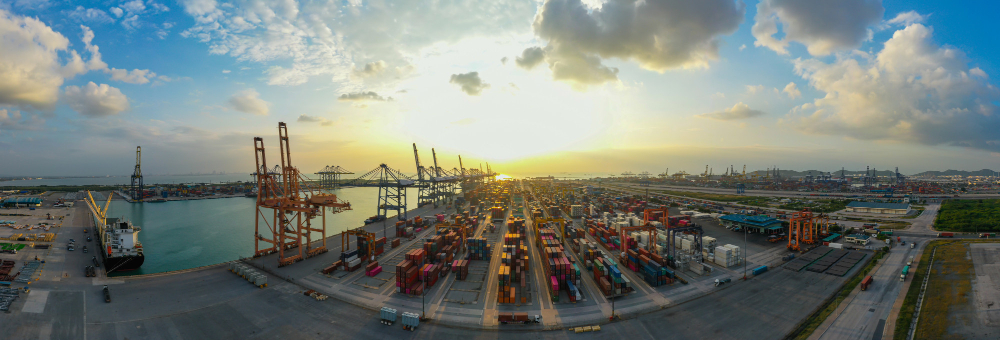In the ever-evolving landscape of business, staying ahead of the competition requires constant adaptation. Nowhere is this truer than in the realm of logistics, where advancements in technology, shifts in consumer behavior, and global events continue to reshape the industry. As 2023 unfolds, businesses must keep a finger on the pulse of the latest trends to ensure their logistics strategies remain not just current, but also ahead of the curve. In this blog post, we’ll explore the top 5 logistics trends that businesses need to be aware of in 2023, ensuring they’re well-equipped to tackle the challenges and seize the opportunities that lie ahead.
Sustainable Logistics:
Sustainability isn’t just a buzzword; it’s a business imperative. In 2023, eco-conscious logistics practices are taking the center stage. Consumers are increasingly mindful of the environmental impact of their purchases, urging businesses to implement greener logistics solutions. This trend goes beyond electric delivery vehicles; it encompasses optimizing routes to reduce fuel consumption, embracing renewable energy sources, and minimizing packaging waste. Companies that prioritize sustainable logistics not only contribute to a healthier planet but also enhance their brand reputation and customer loyalty.
Advanced Data Analytics:
Data has always been crucial in logistics, but 2023 is witnessing a paradigm shift. Advanced data analytics, powered by artificial intelligence and machine learning, are revolutionizing how businesses optimize their supply chains. Predictive analytics help in demand forecasting, ensuring products are in the right place at the right time. Real-time tracking provides visibility into shipments, enabling quicker response to disruptions. By harnessing the power of big data, businesses can make data-driven decisions, enhancing efficiency, reducing costs, and improving overall customer satisfaction.
Digital Twins and IoT Integration:
The integration of digital twin technology with the Internet of Things (IoT) is transforming logistics operations. Digital twins are virtual replicas of physical objects or processes. In logistics, this means creating digital models of supply chain elements, from warehouses to transportation vehicles. When combined with real-time data from IoT devices (such as sensors on packages or GPS trackers), businesses gain unparalleled insights. They can simulate various scenarios, optimize routes, and predict maintenance needs accurately. This synergy between digital twins and IoT not only enhances operational efficiency but also mitigates risks and improves decision-making.
Last-Mile Delivery Innovations:
Last-mile delivery, the final leg of the delivery journey, is where customers directly interact with a business’s logistics service. Innovations in this area are reshaping customer expectations. Drones and autonomous vehicles are becoming more mainstream, promising quicker and more efficient deliveries. Additionally, smart lockers and alternative delivery locations provide flexibility to customers, allowing them to receive packages at their convenience. Businesses investing in last-mile innovations not only enhance customer satisfaction but also optimize costs and delivery times.
Resilience and Supply Chain Diversification:
The disruptions of recent years, from natural disasters to global health crises, have underscored the importance of supply chain resilience. In 2023, businesses are focusing on building resilient supply chains. This involves diversifying suppliers and manufacturing locations, ensuring there are backup options in case of disruptions. Embracing technologies like blockchain for transparent and secure supply chain management also plays a pivotal role. By being resilient and diversified, businesses can navigate unforeseen challenges with agility, ensuring continuity in their operations.
As we venture further into 2023, these logistics trends are not just fleeting fads; they’re fundamental shifts shaping the future of business operations. Embracing sustainability, leveraging advanced data analytics, integrating digital twins with IoT, innovating in last-mile delivery, and prioritizing supply chain resilience are not just strategies; they’re imperatives. By understanding and integrating these trends into their logistics frameworks, businesses can not only meet the demands of today’s dynamic market but also carve a path toward sustainable growth and success in the years to come. Stay tuned, stay adaptive, and stay ahead — the future of logistics is now, and the possibilities are limitless.




